Classification of rocks
Rocks are solid, natural masses of mineral material that are formed at different times and are a result of the environment present during that time.
There are three groups of rock:
- Igneous
- Sedimentary
- Metamorphic
igneous rockIgneous rocks are those which have been formed by the cooling and solidification of molten rock (magma) from underneath the earth’s crust. are formed by magma from the molten interior of the Earth.
When magmaMolten rock that is found within the Earth. erupts it cools to form volcanic landforms.
If magma cools inside the Earth it forms intrusiveIntrusive rock is formed when hot molten magma is forced into small cracks between layers of other already existing rock types., which may later be exposed by erosion and weathering, e.g. granite.
If magma erupts on the surface as lava, it will form extrusive rock, e.g. basalt.

Characteristics of igneous rocks
- These rocks are formed when magma solidifies.
- As the magma cools, mineral crystals will begin to grow.
- These crystals will grow and interlock to form a hard crystalline rock.
- Basalt is usually formed when lava solidifies on the earth’s surface or ocean floor. As the surface is much cooler than the mantle, the rock cools very quickly, so the mineral crystals are small.
- Granite hardens within the earth’s crust, where temperatures are higher, so it cools much more slowly, allowing time for larger crystals to be formed.
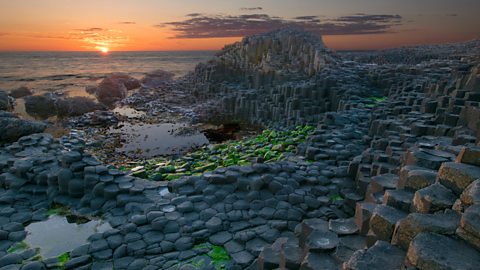
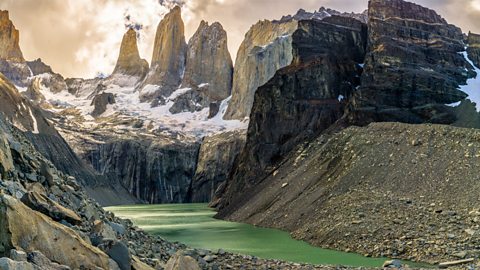
Sedimentary rocks
sedimentary rockSedimentary rocks are those which have been formed due to sediments that have built up over a long period of time, usually under water. are formed from sediments that have settled at the bottom of a lake, sea or ocean, and have been compressed over millions of years.
The sediment comes from eroded rocks carried there by rivers or ice, and from the skeletons of sea creatures.
Examples of sedimentary rocks include limestone, sandstone shale and mudstone.
- Sandstone is rough to the touch, porous and its sedimentary layering is often visible.
- Limestone is largely composed of calcium carbonate from the skeletons of sea creatures.

- The rocks are formed due to the build-up of sediments over time.
- The weathered and eroded material is built up in layers.
- As more material is added on top – this will push any air and/or water out and will compact the material together into a hard rock.
- Often contain fossils of plants and animals
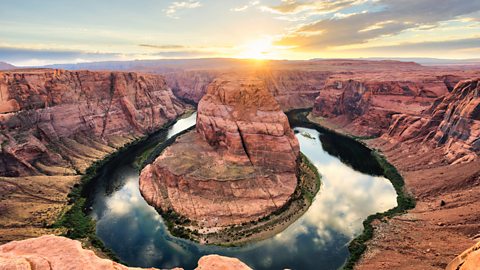
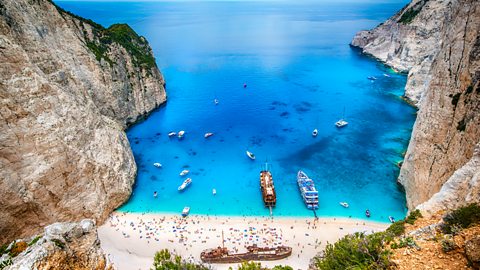
Metamorphic rocks
metamorphic rockMetamorphic rocks are those rocks which have been changed from an earlier state through the addition of pressure or heat.s. have been subjected to tremendous heat and/or pressure, causing them to change into another type of rock.
They are usually resistant to weathering and erosion and are therefore very hard-wearing.
Examples of metamorphic rocks include marble, which originates from limestone and slate, which originates from clay.
Slate is dark grey/green in colour and can be split into thin layers for use as roofing material.
Marble is white or have swirls of colour with a crystallised structure.
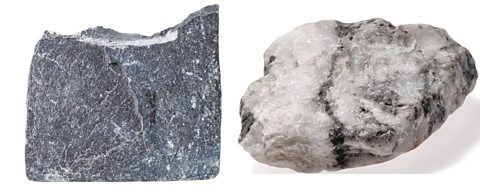
Characteristics of metamorphic rocks
- These are formed when either igneous or sedimentary rocks are changed.
- Heat and/or pressure will cause the elements in the original rock to react and re-form.
- Metamorphic rocks are highly resistant to erosion and are often used in building materials.
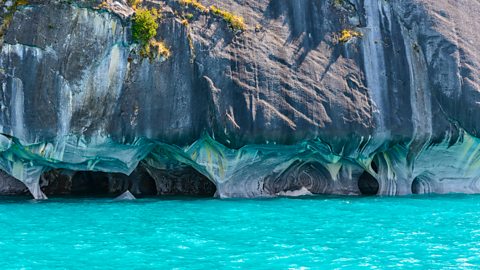
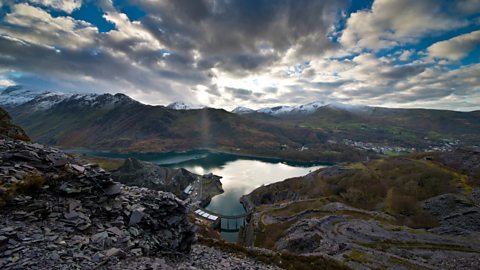
Activity: Take the test
More on The restless earth
Find out more by working through a topic
- count3 of 4
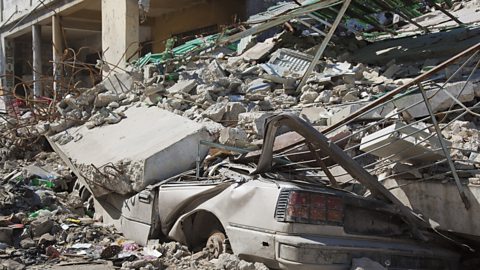
- count4 of 4
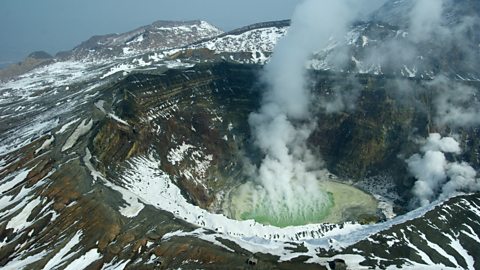
- count1 of 4
